Q&A with Johnnie Means on Diversity & Inclusion
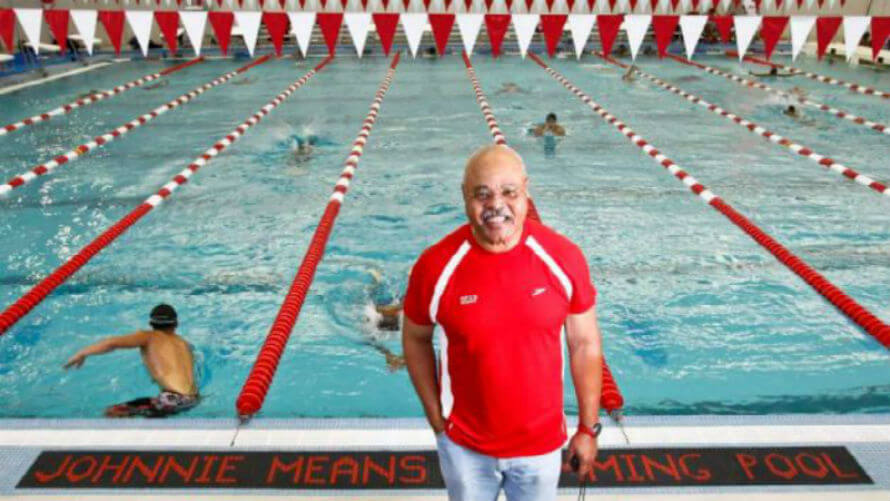
By Xonzy Gaddis, Swimming World College Intern.
For over 50 years, distinguished swimming coach Johnnie Means has been a vocal activist on the advancement of people of color in the sport and a strong advocate of bringing the sport to minority communities in order to increase diversity in the sport.
Means was a swimmer for several years until he coached Texas Southern University and a summer league team. For the past 20 years, Means has continued to coach the Harris County Aquatics Program in Houston, Texas – a program targeting the inclusion of minority groups in the sport of swimming. Swimming World got a chance to catch up with Coach Means on his history and accomplishments in the sport.
Swimming World: What steps did you take towards diversifying the sport, and how have you continued to build diversity?
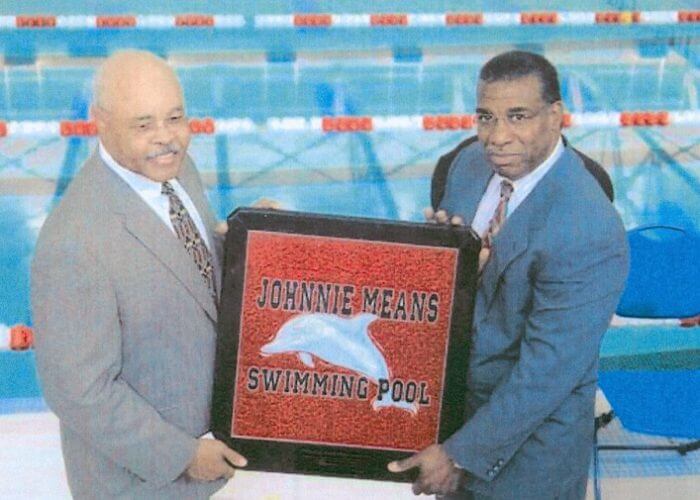
Photo Courtesy: Johnnie Means (Johnnie Means pictured left of former Commissioner El Franco Lee)
Means: The steps that I initially took involved heavily in having to break barriers – especially the issue of segregation – so swimmers of color could swim in the mainstream of the sport. I started off with a college summer league team, and we had to force our way into the system and take advantage of the laws of the land during the AAU (Amateur Athletic Union) swimming years. We were able to get them to caution facilities in Texas from closing their doors to swimmers of color.
After taking a break from college coaching, I went back into the sport years later, starting the Harris County Aquatics Program with former commissioner El Franco Lee, a former swimmer of mine. When Franco and I first started, we had to build our own facility and work with the local school districts and Texas Southern University to get the program up and running. We still hold a strong partnership with the schools and satellite sites.
Being a former swimmer was the main reason I took interest in the issue of diversifying the sport. A large number of swimmers I had came through minority programs, whether it had been through HCAP or another. Very few swimmers move on from minority programs at the learn-to-swim level to competitive programs where they would receive proper training that leads them towards the national level due to the costs involved. HCAP was created to reach out to the minority community and be as inclusive as possible while making both learn-to-swim and competitive swimming affordable (practically free) to swimmers who believe they have the potential to be better.
My goal was – and still is – not to be exclusive, because strong swimmers come from practically any background and program. This way, we can bring in a multitude of people of color into the sport and constantly appeal to the local government. In HCAP’s case, we appealed to the county to sustain the program and make it affordable to the kids in the program. If we ever started charging, we would be like any other program, and this would decrease the amount of kids we are trying to get involved in the sport.
SW: How has inclusion in the sport changed since you first started in swimming up to now?
Means: The sport was segregated when I started. During my competitive years, I swam in a completely segregated environment: a league of only African American swimmers. It became more inclusive and diversified when I started coaching as a young man. My first age group team to compete in an integrated meet was in 1961. Most people don’t remember that in the past 50 years, swimming was exclusively a white sport on the national level. There were few chances where African Americans got to swim in an integrated situation. Now, we see a great change in the dynamics of those involved in the sport and being able to compete at the national level. We now have swimmers such as Simone Manuel, Cullen Jones and Lia Neal leading the sport in a positive light. It truly has come a long way, and we need to continue along the path of keeping the sport open to all people of all colors.
The essence of the sport has also changed due to the upgrade in facilities and work in technique. Changes have been made to suit more swimmers in diverse ranges of strength and flexibility. These developments in the advancement of speed and diversity of demographics have made the sport gradually more exciting.
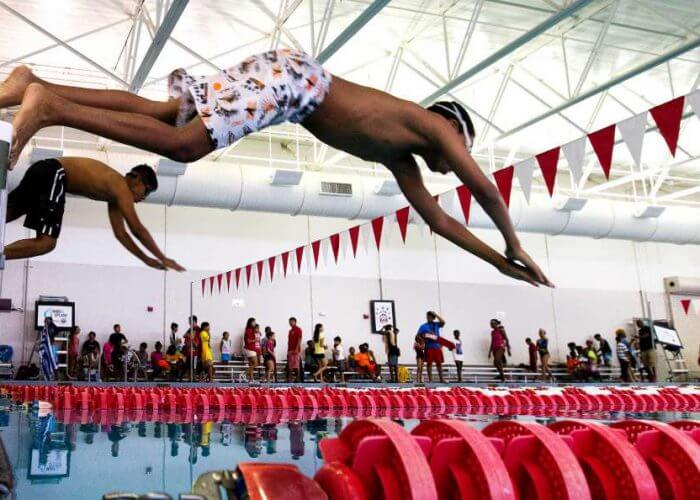
Photo Courtesy: Harris County Aquatics Program
SW: What do you believe is the role of leaders in the sport of swimming when promoting diversity in the sport?
Means: Leaders in the sport include coaches and USA Swimming administration, and I think they are truly putting forth an effort to diversify the sport. One of the things that is helping minorities look at swimming more is the potential of making money and receiving recognition.
Once upon a time, students would finish their swimming careers quite early due to the limited amount of opportunities that were offered. Now, the rise of professional swimmers encourages diversification of the sport, opening up another avenue for swimmers. The generation of role models, such as Manuel and Jones, should be continued so young ones have people to identify with. Increased promotion of the professional level of the sport would be both interesting and appealing to the general public, as we have seen happen with sports such as basketball and football. Adding swimming to the mainstream would greatly increase the popularity of the sport among minorities.
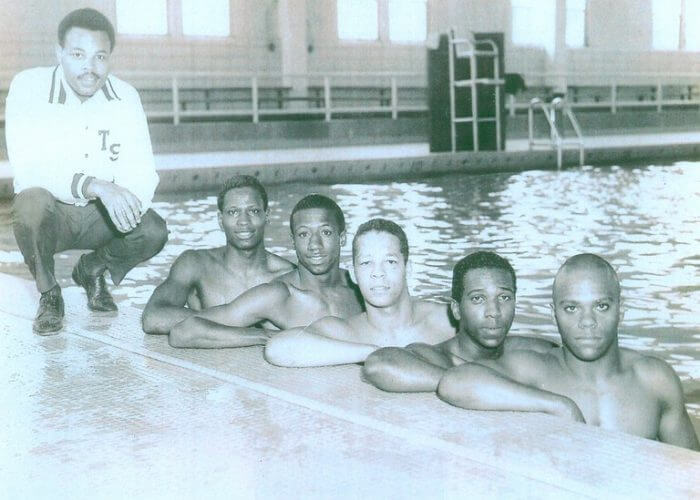
Photo Courtesy: Johnnie Means
Leaders of the sport must also promote swimming within minority communities. Swimming has been such an elite sport that for so long people of color have not had great access to facilities. At one point, swimming was so segregated that the facilities where minorities were able to train and compete were few. We have seen great changes: more inner city teams and teams with open arms to inclusion have allowed for the sport to see a difference in the faces representing the sport.
USA Swimming is putting forth great amounts of effort; however, results are not the most impressive. If we look at the Olympic games, you only see three or four African Americans and a couple of others of color involved. Leaders are going to need more incentive and need to be more innovative to go about promoting it. The novelty to the excitement of the sport is really influential, as seen in basketball or football where kids start out wanting to be involved in the sport at a young age.
SW: What are the differences between diversity and inclusion? How do they go hand in hand?
Means: Diversity is simply different ethnic groups and different ways people identify themselves. On the other hand, inclusion is the unification of these people from different backgrounds. With inclusion, we create a diverse program.
An example would be the Outreach Program for swimming. The Outreach program – a clinic formed by myself and a couple other coaches from minority programs – was formed with help from USA Swimming to get people of color in the mindset that they were needed in the sport. Roughly 90 percent of athletes at the clinic were African Americans, while the others came from Hispanic and Asian backgrounds. As a result of the success of the togetherness of these groups, the program was renamed the Diversity & Inclusion Camp and now operates at the national and zone level.
SW: What do you define as a diverse swimming environment?
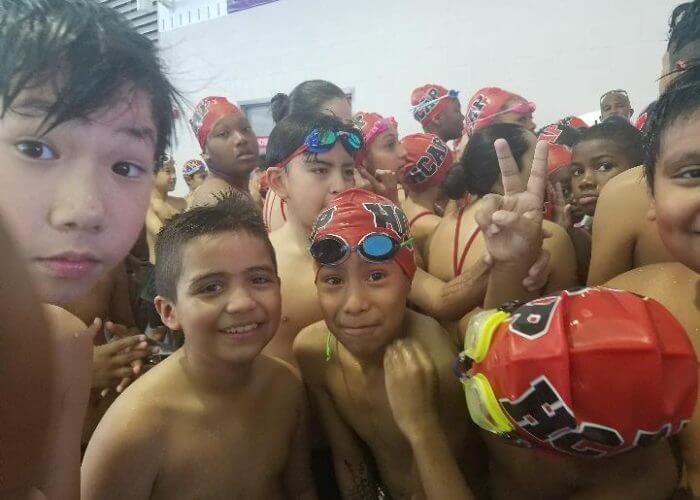
Photo Courtesy: Harris County Aquatics Program
Means: A diverse swimming environment is one where any and everybody is presented with an affordable opportunity to be a part of the swimming world. Resources should be made available to the whole spectrum of identities and color. Until we can have vast swimmers of all backgrounds, we will not get the swimmers we are truly looking for. Until we get more programs with consistent inclusion, we will be able to make a true change. Both sides must pick up the baton to see some positive change.




An enjoyable read
cool
Very well written article.
An excellent piece on how inclusion in competitive sports can be advocated for!!! Great piece!! Wonderful understanding of the topic!! But question how can one take the steps to understanding the true meaning of inclusion in competitive sports? Keep going you are doing great
I really liked reading this article! Great questions and answers!
-Daria